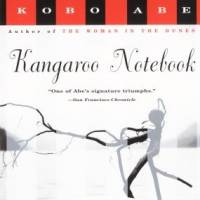Asked to come up with a new product by his company, an employee creates the titular Kangaroo Notebook (a notebook with a pouch in it). While doing so, he suddenly starts sprouting daikon-radish shoots from his shins.
Kangaroo Notebook, by Kobo Abe, Translated by Maryellen Toman Mori.
192 pages
VINTAGE INTERNATIONAL, Fiction.
He hurriedly consults a doctor and enters an operating theater only to embark on a surreal journey upon an iron bed that takes him over the river of the dead and into the underworld.
Suffused with the hell-like smell of sulphur, with a catheter in his penis and occasionally grazing on those daikon sprouts, the narrator contemplates scientific calculations and encounters demons and freaks as he goes.
But this bizarre, oneiric journey is really just an exteriorized exploration — as with so many other Abe novels — of a tortured psyche. For the bed is also the seed-ground for sexual guilt and infection, as well as parental obsession, and those shin-issuing growths are a phantasmagoric realization of the phrase "sune ni kizu o motsu" ("to have cuts on the shins," analogous to a guilty conscience).
In this, his final novel before his death in 1993, Abe indulges in so many freewheeling, absurdist ideas that you almost feel that kangaroo-like leaps are required to follow the flux of the writer's unconstrained surrealist, occasionally exasperating imagination. Yet piece together the absurdist clues and you arrive at a different means of accessing the psychological suppressions of everyday reality.
Read archived reviews of Japanese classics at jtimes.jp/essential.


















With your current subscription plan you can comment on stories. However, before writing your first comment, please create a display name in the Profile section of your subscriber account page.